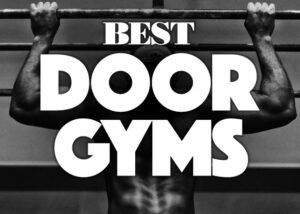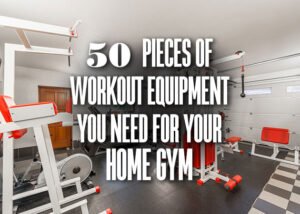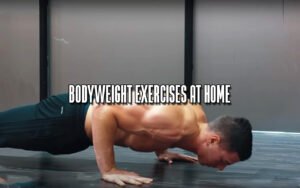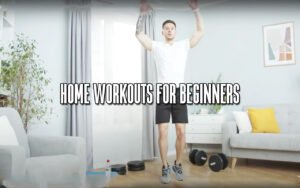
Engaging your Core during your workout helps reduce the risk of injury, especially injuries to the lower back. A fitness expert explains how to use your Core to reduce injuries and enhance performance both inside and outside the gym.
Take part in any fitness activity, such as cycling, HIIT, or strength training, and the instructor will undoubtedly tell you to “engage your core” at least a dozen times. You may either suck in your stomach or hold your breath and continue your workout.
It is also not as simple as it sounds to activate your Core, but that isn’t what it implies. Here, you’ll find trainer-approved ideas for correctly engaging your core and learning strategies that will help you master the method during all of your exercises. Plus, discover why core engagement — in both the exercise and everyday lives — is so significant in the first place.
What It Means to Engage Your Core
First, here is a short description of your main core muscles. The Core comprises several muscle groups, including the abdominals (including the rectus abdominis muscle, internal and external obliques, and transverse abdominis muscle), erector spinal, pelvic floor, and diaphragm. This combination of muscles works together to control and protect your spine, allowing you to avoid injury when standing upright, hinging, squatting, bending, and doing other activities.
When an instructor encourages you to “activate” your Core, they’re asking you to “contract” and “brace” your core muscles, which will help tighten your mid-section. “What it does is stabilize your pelvis and spine, reducing lower back injury, protecting your internal organs, improving posture, and providing a slew of other vital activities. Ideally, it would be best to use your Core for everything from light exercises to more intense workouts throughout the day. “It improves your lower back health and safety by allowing you to move practically without injuring yourself.
The Importance of Engaging Your Core
Helps Prevent Injury During Workouts
Core engagement may seem like NBD. However, if you don’t know how to use your Core while exercising, you risk injury, notably lower back. Reminder: Your Core isn’t restricted to your abdominal muscles. Your back muscles also assist with movement, which helps to protect your spine. You’ll equally distribute the burden required to maintain you upright and stable if you engage your entire Core during, for example, a back squat. “But once you let go of that fundamental involvement, your back does all the work,” which can put you at risk for injury. Your core muscles are vital for keeping you standing erect and balanced, so engaging them can prevent you from falling when you’re shifting your weight from one side to the other (think: running, dancing, stair-climbing).
Improves Functional Strength
Outside of the gym, engaging your Core can also assist you in staying safe. When you’re picking up a hefty piece of luggage off the ground and placing it in an airplane’s overhead compartment, your Core is required to keep your lower back safe. When carrying heavy grocery bags that weigh two different amounts, your Core must be committed to keeping you steady and preventing you from falling over. If you want to lead a healthy, productive life, you’ll need to learn to engage your Core. Here’s how to activate your Core for better health and performance:
May Improve Workout Performance
You may not be able to perform anan activity you’re attempting if you don’t properly engage your Core during a workout. Maybe you can’t go as deep into the squat because you’re fatiguing other muscle groups first. Perhaps your breath evaporates faster since you’re using different muscle groups before your core muscles. Furthermore, engaging your Core helps you maintain good posture, allowing you to get the most out of each workout. When you have better posture, more oxygen enters your lungs, allowing you to recover faster and go farther. “It’s important to maintain a healthy muscle activity in your Core. If you’re not doing so, it limits your ability to move faster, better, and safely during any sport.”
How to Engage Your Core
So, how can you engage these critical muscles safely and effectively? A few images might assist you in learning how to activate your Core. A frequent signal is to position your hands like bracing for a punch to the stomach. “I like to say that you’re about to be tickled, and people clench up in preparation,” activates the Core.
You may also consider drawing your belly button toward your spine. It will feel like a belt is being tightened around you. It could appear that your ab muscles are contracting and that your pelvic, hip, and thigh muscles are slightly tucked in. This core strength will give you more excellent stability throughout the workout. “Engage your Core while exhaling: While working out, you’ll want to focus on your Core and breathe out: It’s challenging to engage your Core while you have a lot of air in your stomach.
Activation Exercises to Practice Engaging Your Core
Although it appears to be straightforward, learning how to activate your Core isn’t something that happens quickly. Engaging your Core is a mind-muscle connection that needs to be understood. Before you get started with your exercises, she advises performing a few core activation routines. Your Core will be primed and ready to tackle your workout, and you’ll know precisely what it feels like for your Core to be activated. “It just gets that mind-muscle connection going before you go into your squat or pick up a dumbbell, so you’re setting yourself up for success,” says the coach.
Tabletop Core Contraction
A. Take a tabletop posture with your hands directly beneath your shoulders and knees beneath your hips.
B. On an exhale, engage the Core by drawing the navel up and toward the spine.
C. Inhale and slowly release the Core to return to the beginning posture.
Glute Bridge
A. Face up with your feet flat on the floor, and your knees bent, in line with your heels. Place your palms down on your sides, with elbows at 90 degrees. Tuck your tailbone and tilt your pelvic floor muscles, which will engage your core muscles.
B. Exhale, push your feet into the floor to lift your hips, forming a straight line from your knees to your chest. Inhale and drop your hip to the bottom to return to the beginning position.
Reverse Crunch
A. Face down on the floor, with your legs straight and parallel to the floor and your arms at a 90-degree angle over your head. Put your palms down and your arms at your sides. Tuck tailbone and tilt pelvic floor muscles so lower back imprints into the floor to engage core muscles.
B. Exhaling, keep your Core engaged, and slowly lower both legs until your feet tap the floor. Inhale and slowly raise your legs back to the start position.
Dead Bug
A. Kneel in a reverse tabletop posture, with your knees bent at a 90-degree angle over your hips and shins parallel to the floor. Raise your arms to the ceiling in a straight line with your shoulders. To activate core muscles, tuck the tailbone and tilt the pelvic floor. Engage your Core by pressing down on your lower back with your fingertips.
B. Take a deep breath and hold it as you slowly lower your right leg and left arm toward the floor until they’re fully extended.
C. Take a deep breath, then raise the leg and arm to return to the starting position. Continue, alternating sides.
Bear Plank Hold
A. Begin in a tabletop posture with hands positioned directly below the shoulders, knees beneath the hips, and toes tucked.
B. Exhale and pull the navel up and toward the spine to activate the Core. Continue to press through the hands and raise the legs two to three inches above the floor, keeping the back flat. Keep your knees together for a second; then, on an inhalation, return to the start position with your knees bent.









Blog Comments
9 Cardio Workout Moves that you can do at home
June 11, 2022 at 2:11 pm
[…] would be best if you first raised your core temperature to get all the health benefits from working out. Start to sweat as a result of raising your core temperature. Cardio workout produce heat in […]
One Squat Variation for a Perkier Butt - Home Workout Reviews
July 1, 2022 at 10:37 am
[…] sure your tailbone is tucked, your core is engaged, and your shoulders are drawn back when you’re ready to start. Keep your chest up and lower […]
Bulgarian Split Squat - Home Workout Reviews
July 1, 2022 at 11:15 am
[…] sure your tailbone is tucked, your core is engaged, and your shoulders are drawn back when you’re ready to start. Keep your chest up and lower […]